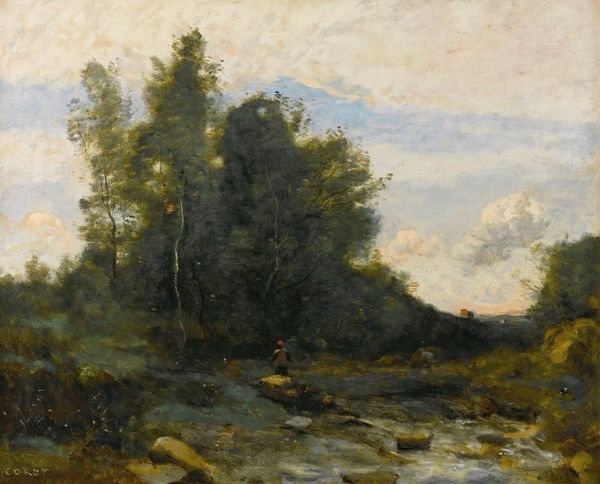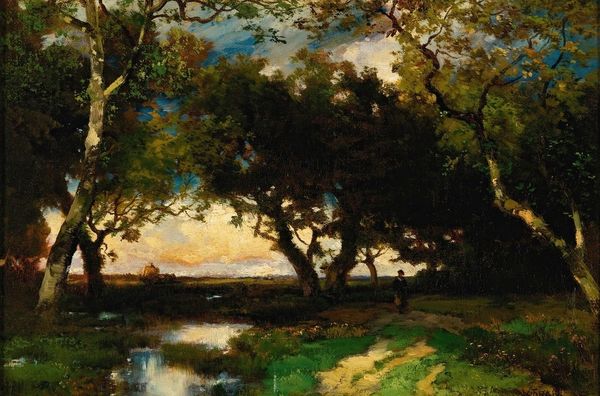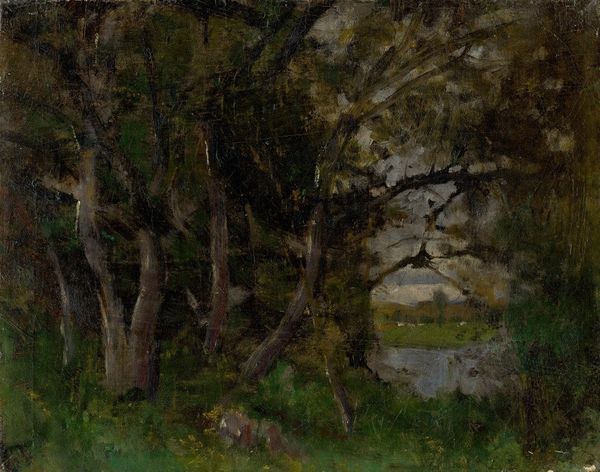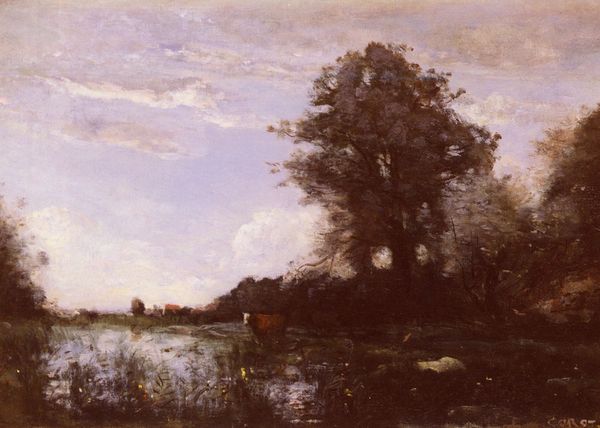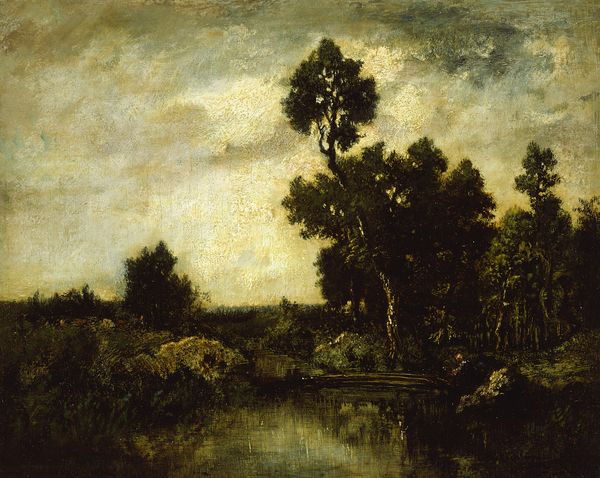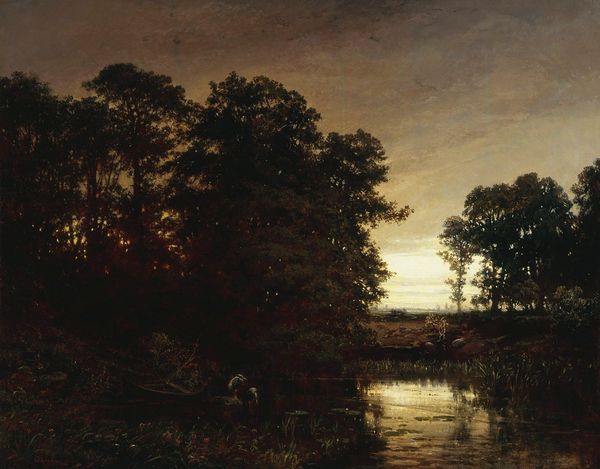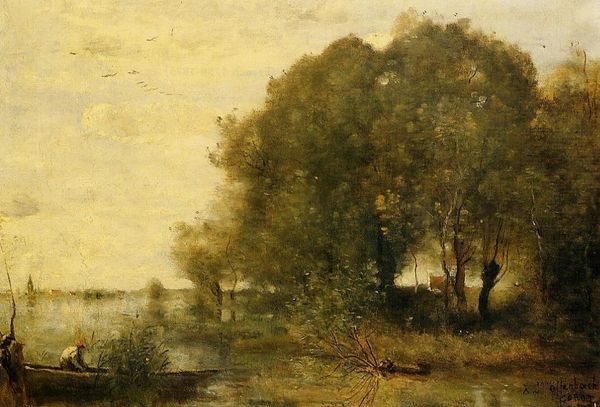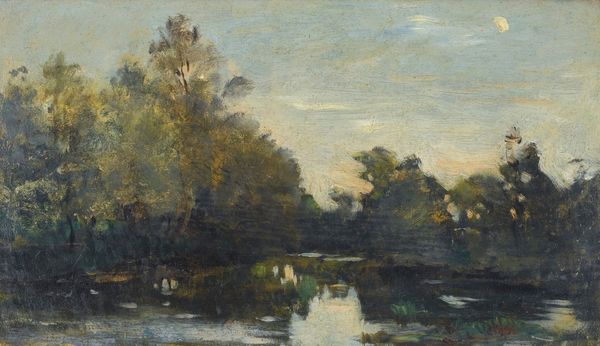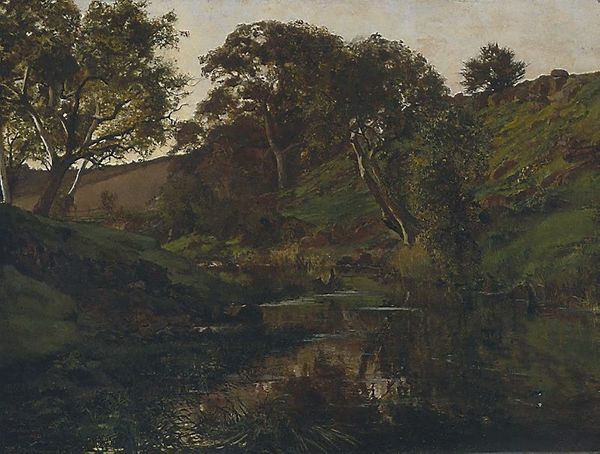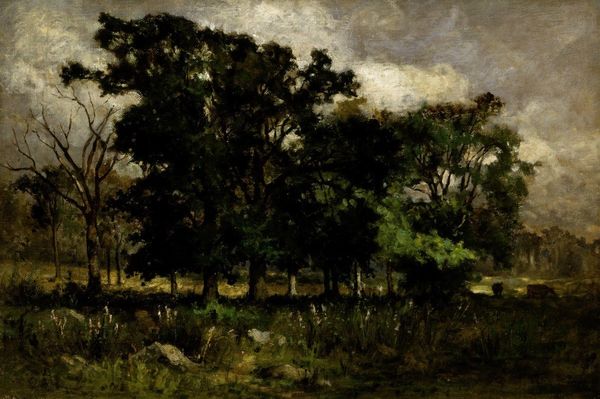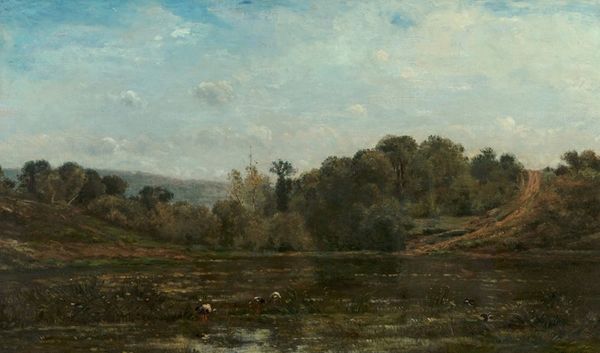
Copyright: Public Domain: Artvee
Editor: Looking at Daubigny's "A Pond in the Morvan," painted in 1869 using oil paint in a plein-air style, I’m immediately struck by its rather somber, almost melancholic mood. The scene feels very natural and almost untouched. What are your thoughts when you look at this piece? Curator: It’s interesting you pick up on the untouched feel. Consider the era, 1869. Industrialization was rapidly changing the French landscape. Paintings like this served a crucial cultural function. They weren’t just about representing nature; they were about preserving a vision of a rural past, even mourning its loss. Do you see any element in the image that reinforces that interpretation for you? Editor: Perhaps the scale of the trees? They feel… overwhelming, like nature is reclaiming space. Was this piece then, intended as some form of quiet protest or a commentary on environmental issues? Curator: “Protest” might be too strong, but it's definitely a commentary. Daubigny, and artists like him, participated in shaping the narrative around industrial progress. They reminded viewers of what was being lost – the simplicity and beauty of the countryside – as France modernized. He even painted from a boat called “Le Botin," a studio on water! This brings up questions: who had access to this imagery? And what effect did it have on those audiences? Editor: So the painting is acting not just as art but almost as a historical document, recording a disappearing way of life for a specific, probably urban, audience? Curator: Exactly. It performed a very public function, influencing perceptions and perhaps even contributing to emerging environmental consciousness, even as it benefitted a privileged, gallery-going population. Editor: I hadn't considered the role of the painting beyond its pure aesthetics, or its place in socio-economic discourses. Thank you for that shift in perspective! Curator: And thank you, thinking about art as an active cultural participant enriches our understanding of both history and the artwork.
Comments
No comments
Be the first to comment and join the conversation on the ultimate creative platform.
